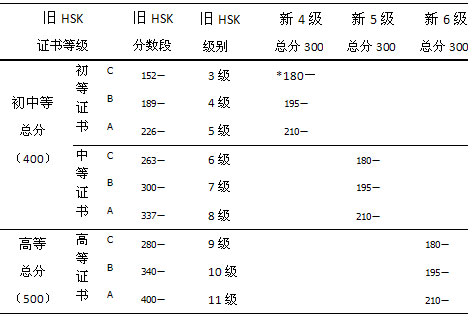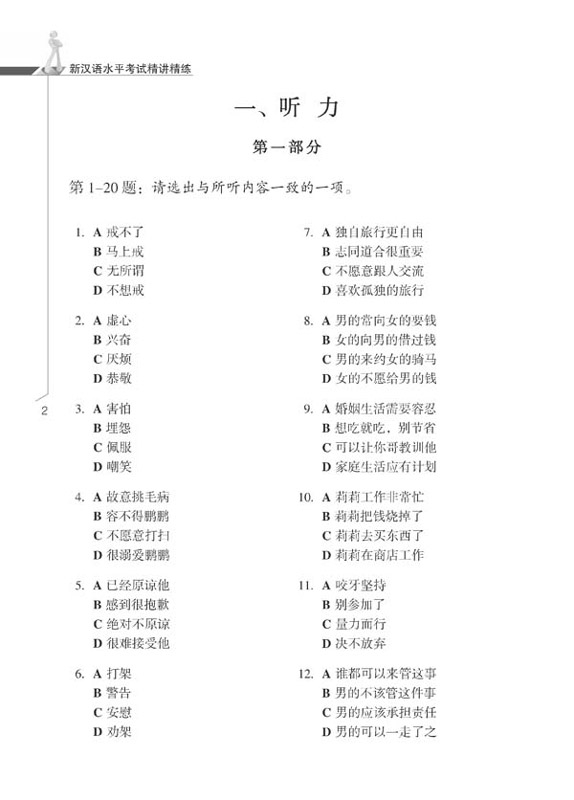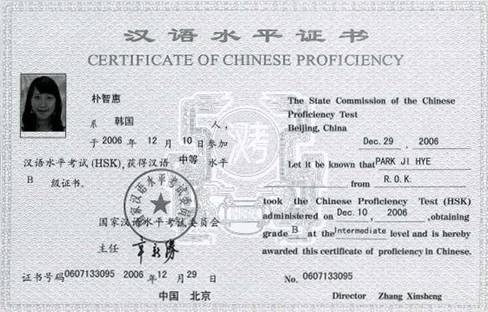Previously, the highest level of the HSK was HSK level 11, not HSK 6. But with the new format of the HSK being introduced in March 2010, now HSK 6 is the holy grail of Chinese test-takers from around the world. Luckily, with the altering of both the structure and the style of language tested on the new highest level, students can expect to have an easier time with the HSK 6. Beforehand, the HSK 11 was exceedingly hard, testing a total of five sections, one specifically focused on grammar, a huge sticking point for foreigners and Chinese alike. The new HSK, in contrast, only contains three sections: reading, writing, and listening. Speaking is now optional. See the HSK 6 study guides for more in-depth explanations.
HSK 6 — The Three Sections
The HSK 6 is divided into 3 sections: reading, writing, and listening. The test begins with the listening section, which includes three areas: short lectures, discussions, and long lectures. Then comes the reading section, which contains four areas: error recognition, word cloze, phrase close, and reading passages. Finally, test-takers meet the writing section, which contains a single question: the essay summary. You must do well in all areas to pass HSK 6, so if you are weak in one of these areas, bring your skillset up before taking the test. No, you cannot compensate your poor listening with good reading or visa-versa. Many students find writing to be the biggest problem, which is why we recommend HSK 6 writing practice at least four times a week the month before taking the HSK 6.
What Is the HSK 6 Looking for?
Unlike the earlier levels of the HSK, which only cared about your comprehension of the language, the HSK 6 also cares about your ability to produce language, as evident by the manditory essay. In addition, superficial undersanding is no longer rewarded; for sections such as the error correction section, a strong grasp of Chinese grammar is necessary for doing well on the HSK 6. If your grammar is poor, your HSK 6 test results will also be poor. In addition, many students taking the HSK 6 from outside China complain about the difficulty of the test in terms of its cultural aspects. For example, phrases that seem illogical but are commonly used within China often appear on the test, making those who haven’t familiarized with the culture of China feel at a loss.
HSK 6 — For Foreigners
Ultimately, the HSK 6 is a test for foreigners, which means you do have some leeway, especially in the essay. You don’t have to write with perfect grammar, as very few non-native speakers of any language can write with 100% grammatical accuracy. To push to point home, I work as a Chinese-English translator and see grammar mistakes all the time in my native Chinese clients. The essay section of the test is mainly looking at your writing (typing) ability and your ability to communicate yourself through this strange foreign language known as Chinese. Unlike HSK 6, level 1, not every question has a “correct” answer. That is, the test graders can’t just through your paper through a machine and get a score; they have to actually grade many sections by hand. So, in a way, the grading of the HSK 6 exam is subjective, which can be good or bad, depending on how you look at it. And that goes double for the HSK 6 speaking test.





